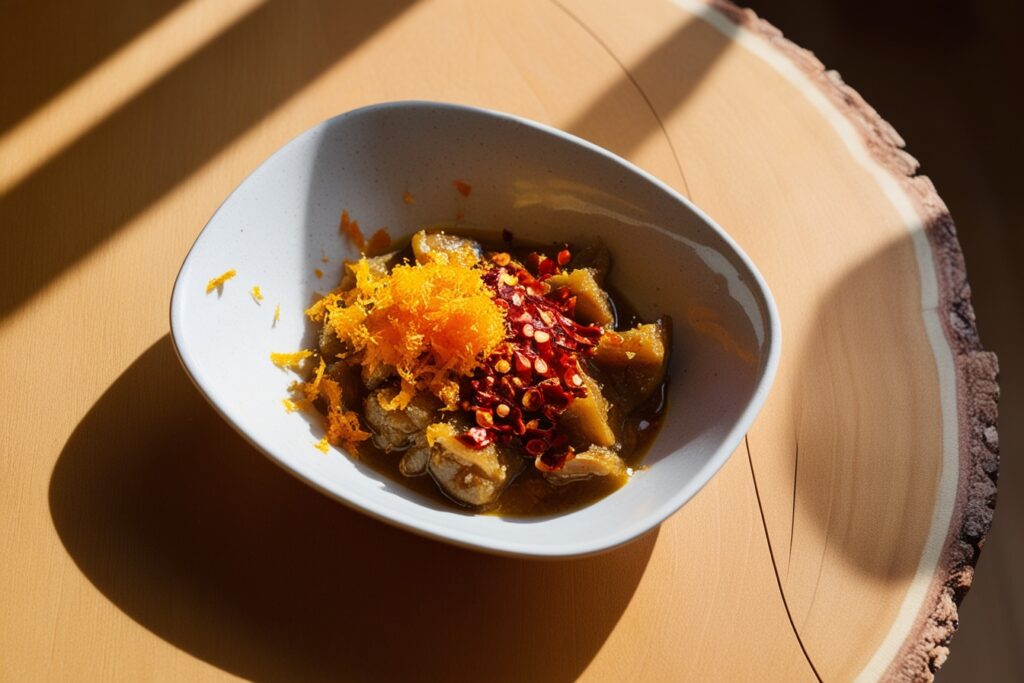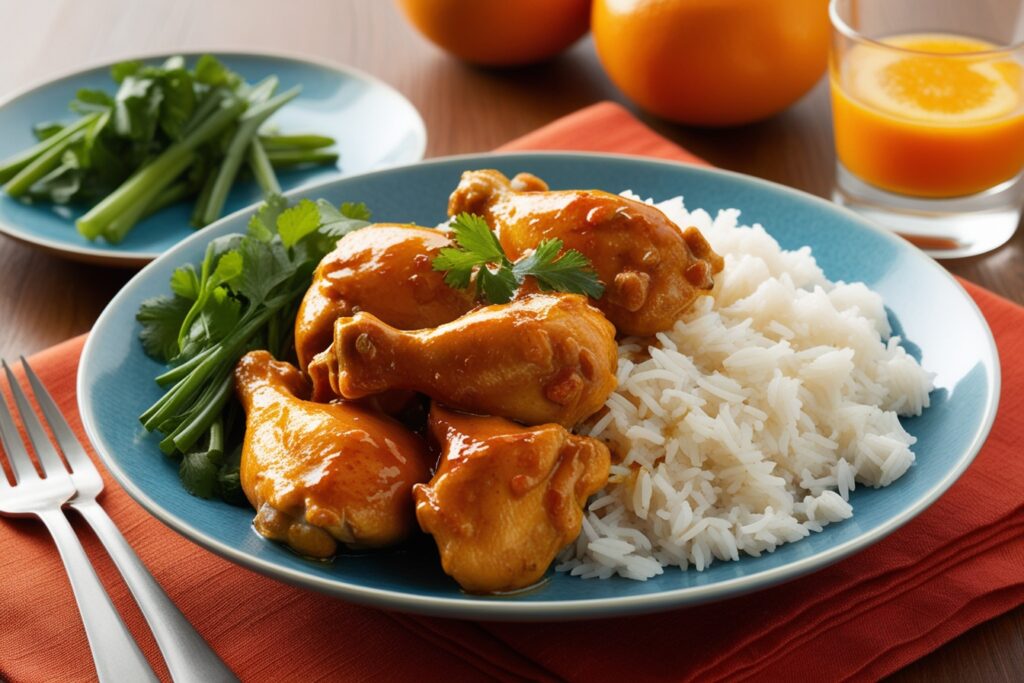Panda Express Hot Orange Chicken: A Bold, Spicy Twist You Can Make at Home

Panda Express Hot Orange Chicken is a beloved dish that has gained a loyal following due to its perfectly crisp chicken pieces, bathed in a rich, spicy orange sauce that offers a balance of sweetness and heat. Recreating this iconic recipe at home is easier than you might think, and it’s a fantastic choice for both weeknight dinners and special occasions. This guide will walk you through all the steps, tips, and tricks needed to achieve that restaurant-quality flavor and texture, right in your kitchen.
Table of Contents
- Introduction
- What Makes Panda Express Hot Orange Chicken So Popular?
- Key Ingredients and Their Role in the Dish
- Preparing the Chicken for Frying
- Creating the Perfect Orange Sauce: Ingredients and Techniques
- Tips for Adjusting the Spice Level
- Frying Techniques: How to Achieve a Perfectly Crispy Texture
- Combining Flavors: Tossing the Chicken in Sauce
- Creative Serving Suggestions and Pairings
- Variations on the Original Recipe
- Common Mistakes and How to Avoid Them
- Nutritional Information and Tips for Healthier Options
- Conclusion
1. Introduction

The Hot Orange Chicken from Panda Express has been a favorite for years, known for its addictive balance of crispy chicken, sweet and zesty orange sauce, and a fiery kick. This recipe allows you to replicate those flavors in the comfort of your own home. Whether you’re a beginner or a seasoned cook, following these steps will help you create a dish that rivals the restaurant version. Let’s get started!
2. What Makes Panda Express Hot Orange Chicken So Popular?

Panda Express has mastered the art of flavor fusion, combining American-Chinese flavors in a way that appeals to a wide audience. The popularity of Hot Orange Chicken can be attributed to its combination of crispy, juicy chicken and bold, spicy-sweet sauce. The dish has layers of flavors—citrusy notes from the orange, a savory touch from soy sauce, sweetness from sugar, and heat from red chili flakes. This mix of tastes and textures makes it a go-to choice for people who love bold, spicy dishes.
3. Key Ingredients and Their Role in the Dish

Here’s a breakdown of the essential ingredients you’ll need and their roles in the recipe:
- Boneless, skinless chicken thighs: These are ideal because they’re juicier and more flavorful than chicken breasts, holding up well to frying and sauce.
- Cornstarch and flour: A combination of cornstarch and flour gives the chicken its signature crunch. Cornstarch is the secret ingredient for a light, crispy coating.
- Eggs: Eggs help the coating stick to the chicken and give it a rich texture when fried.
- Fresh orange juice and zest: Freshly squeezed orange juice offers a natural, vibrant flavor, while zest adds a punch of citrus that enhances the sauce.
- Soy sauce: Adds depth and umami to the sauce, balancing the sweetness.
- Vinegar: Adds a tangy element that complements the sweet orange and keeps the dish from tasting too sugary.
- Garlic and ginger: These ingredients provide warmth and complexity, essential for that authentic Asian-inspired flavor.
- Sugar or honey: Sugar provides sweetness, creating a beautiful contrast with the spice. Honey can also be used for a more natural sweetness and additional thickness.
- Red chili flakes: The source of heat, giving this dish its spicy kick.
- Green onions and sesame seeds: Optional garnishes that add color, flavor, and texture.
4. Preparing the Chicken for Frying
Properly preparing the chicken is the first step in achieving a crunchy, flavorful coating. Follow these steps to ensure your chicken turns out perfect:
- Cut the chicken: Trim any excess fat, then cut the chicken thighs into bite-sized pieces. Make sure each piece is about the same size for even cooking.

- Create the coating: In a mixing bowl, whisk together cornstarch, flour, salt, and pepper. This mixture will form the base for the crispy coating.

- Double-coat the chicken: First, dredge each piece of chicken in the flour-cornstarch mixture. Next, dip it into a bowl of beaten eggs, then coat it again in the dry mixture. This double-coating process helps create an extra-crispy crust that holds up well under the sauce.

- Rest the chicken: After coating, let the chicken rest on a plate for a few minutes. This helps the coating adhere better when frying.

5. Creating the Perfect Orange Sauce: Ingredients and Techniques
The orange sauce is the star of the dish. Here’s how to make it just right:
Ingredients for the Orange Sauce

- 1 cup fresh orange juice: Squeezing fresh oranges will give you the most vibrant flavor.
- 2 tablespoons orange zest: Zest adds concentrated citrus flavor. Be sure to only grate the outer layer to avoid the bitter white pith.
- ¼ cup soy sauce: For savory depth.
- ¼ cup rice or white vinegar: Provides acidity to balance the sweetness.
- ½ cup sugar or honey: Sweetness is essential in balancing the flavors. Honey adds a bit of extra richness.
- 2 cloves garlic, minced: Garlic adds a warm, savory flavor that complements the sweetness.
- 1 tablespoon ginger, minced: Ginger pairs well with garlic, adding a spicy undertone.
- 1 tablespoon cornstarch, dissolved in water: Used to thicken the sauce to the right consistency.
- Red chili flakes: Adjust according to your spice tolerance.
Making the Sauce
- In a saucepan over medium heat, combine orange juice, soy sauce, vinegar, sugar, garlic, and ginger.

- Bring the mixture to a gentle boil, then reduce the heat to a simmer.

- Add the cornstarch mixture to thicken the sauce. Stir constantly as the sauce thickens and reaches a glossy texture.

- Finally, add the orange zest and red chili flakes. The zest provides a bright burst of citrus flavor, while the chili flakes add heat.

6. Tips for Adjusting the Spice Level
The spice level of this dish can be easily modified to suit your taste:
- For a milder version: Use fewer chili flakes or omit them entirely.
- For a medium heat: Stick with the standard amount of red chili flakes in the recipe.
- For extra spice: Add additional chili flakes or a dash of hot sauce to the orange sauce. Alternatively, fresh or dried Thai chilies can bring even more heat.
7. Frying Techniques: How to Achieve a Perfectly Crispy Texture
Frying the chicken properly is key to achieving a restaurant-quality result:
- Use the right oil: Vegetable or canola oil works well for frying because it has a high smoke point and a neutral flavor.
- Heat oil to 350°F (175°C): Use a thermometer to maintain the right temperature. If the oil is too cool, the chicken will absorb excess oil and become soggy; if it’s too hot, the coating will burn.
- Fry in batches: Avoid overcrowding the pan, as this can lower the oil temperature and result in soggy chicken. Fry the chicken pieces in small batches for the best results.
- Drain excess oil: Use a slotted spoon to remove the chicken from the oil and place it on a paper towel-lined plate to absorb any excess oil.
8. Combining Flavors: Tossing the Chicken in Sauce

Once the chicken is fried, it’s time to add it to the sauce for that classic Panda Express taste:
- Heat the orange sauce: In a large skillet or wok, reheat the sauce over medium heat until it begins to bubble.
- Add the fried chicken: Add the fried chicken pieces to the skillet and toss to coat them thoroughly in the sauce. The sauce should stick to the chicken without making it soggy.
- Simmer for a minute: Let the chicken and sauce cook together for an additional minute to meld the flavors.
9. Creative Serving Suggestions and Pairings
While Hot Orange Chicken is delicious on its own, you can make it a complete meal with the right pairings:
- Steamed white rice or jasmine rice: The mild flavor of rice balances out the bold flavors of the chicken.

- Fried rice or noodles: For a more filling option, serve the chicken with fried rice or stir-fried noodles.

- Vegetable stir-fry: Adding some stir-fried vegetables like bell peppers, snap peas, or broccoli complements the dish and provides a fresh, crunchy contrast.

- Appetizers: Serve with egg rolls, spring rolls, or dumplings for a complete Panda Express-inspired meal.

10. Variations on the Original Recipe
You can customize this recipe to suit your preferences. Here are a few ideas:
- Make it gluten-free: Use gluten-free soy sauce and a gluten-free flour blend.
- Try baked or air-fried chicken: For a healthier version, bake or air-fry the chicken instead of deep-frying.
- Use orange marmalade: For an extra-sweet version, substitute some of the orange juice with orange marmalade in the sauce.
- Add vegetables
: Add bell peppers, onions, or broccoli to the sauce for extra flavor and texture.
11. Common Mistakes and How to Avoid Them
Avoid these common pitfalls to get the best results:
- Not heating the oil to the right temperature: This can make the chicken greasy or burnt.
- Skipping the double-coating step: Double-coating gives the chicken its crispy texture.
- Not letting the sauce thicken properly: Thicken the sauce with cornstarch to ensure it clings to the chicken.
12. Nutritional Information and Tips for Healthier Options
The original recipe is high in calories, sugar, and fat. Here’s how to make it lighter:
- Bake or air-fry the chicken instead of deep-frying to reduce fat.
- Use honey or a natural sweetener in place of sugar for a more natural sweetness.
- Add more vegetables: Bell peppers, snap peas, and broccoli can add nutrients and reduce calorie density.
13. Conclusion
Mastering the Panda Express Hot Orange Chicken recipe at home brings a touch of culinary excitement to your kitchen. With its balance of crispy texture, bold flavors, and a hint of spice, this dish is sure to impress family and friends alike. Not only have you created a restaurant-quality meal, but you’ve also experienced the satisfaction of crafting it yourself. Ready to expand your cooking repertoire even further? Explore more of our recipes for a variety of delicious, easy-to-follow dishes that will elevate your home dining experience to the next level!


1 thought on “Best Panda Express Hot Orange Chicken Recipe”